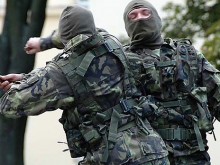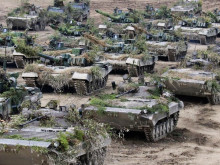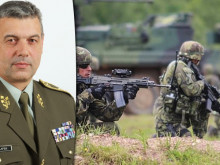Gen. Jaroslav Míka: The 21st Tactical Air Force Base Čáslav has a unique role in the defence of the Czech airspace
The future modernisation of the 21st Tactical Air Force Base Čáslav is frequently discussed in the media, not only in connection with the planned acquisition of American F-35 aircraft, but also with the increase in the number of supersonic aircraft from the current fourteen aircraft (twelve single-seat JAS-39 C, two two-seat JAS-39 D) to a total of 24. In this context, we asked for an interview with the former commander of the Čáslav base, Brigadier General Jaroslav Mika, who was appointed as Deputy Director of the Force Development Section of the Ministry of Defence on 1 November.
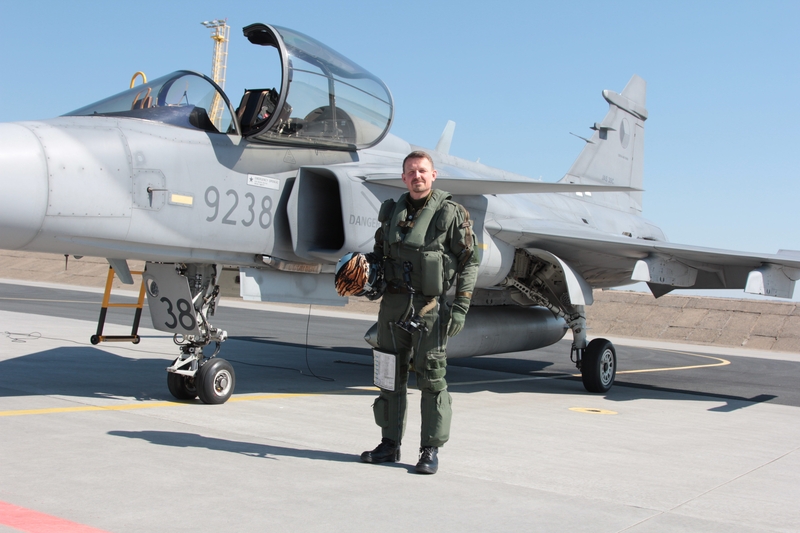 Picture: General Jaroslav Míka | 21. zTL
Picture: General Jaroslav Míka | 21. zTL
General, can you give us an overview of the current state of the 21st Tactical Air Base Čáslav? Recently, there has been talk about the need to modernise the base, including its infrastructure, not only because of the potential acquisition of F-35 aircraft, but also because of the need to service allied aircraft.
The 21st Tactical Air Base Čáslav has a unique role in the defence of the airspace of the Czech Republic and we are currently able to fulfil this task as we are assigned. Of course, this requires some infrastructure, which corresponds to the fact that today we operate with the fourth-generation JAS-39 Gripen and L-159 aircraft. At the end of the 1990s, in the early 2000s, the general layout of the Čáslav base was built and it was to be modernised to certain standards. This modernisation was to take place in three phases. In the end, only phase one was carried out and then, unfortunately, cuts were made and the subsequent phases II and III were not implemented. With the acquisition of Gripen aircraft, there was a major modernisation compared to the 1990s, but it was never properly completed, and so, although we are able to operate aircraft here at the base today, it is without any development potential. Since the infrastructure modernisation should have been done twenty years ago, Phases II and III really need to be completed. So regardless of the F-35 acquisition, the base badly needs infrastructure investment to bring it up to the level of a standard base.
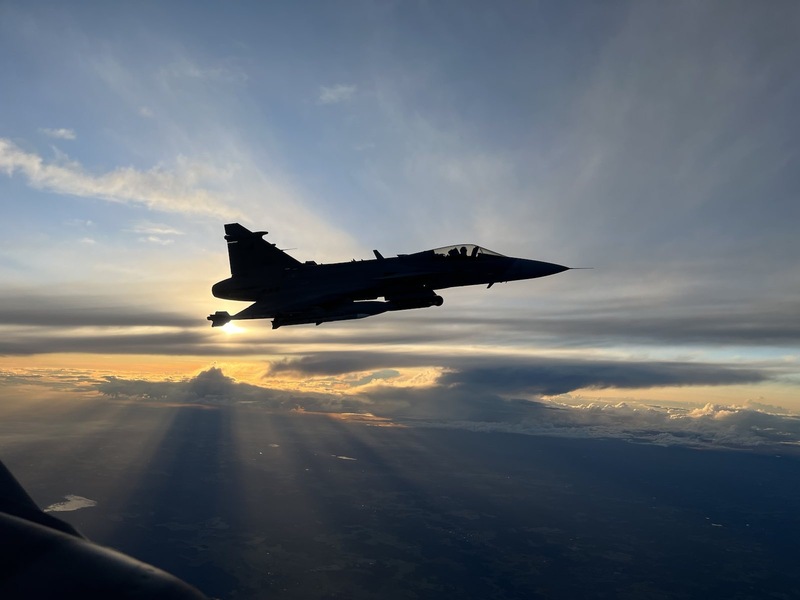
We obviously have an essential role in the overall alliance defense plan as a Host Nation Support base, where we should be able to host one tactical squadron of Western aircraft here on a long-term basis. That's the donkey's bridge to the F-35s, even if we don't end up getting them, major infrastructure construction still has to take place to continue to do our job, because we're going to end up with two squadrons of supersonic aircraft anyway. So interventions here in Čáslav will be necessary. As part of the provision of Host Nation Support, we have to rebuild the runway, or we have to build a new runway, because the existing one was built in the 1950s. Hats off to the way our forefathers did it. The guys who built it back then did a really good job because it has lasted us almost 70 years. The track is not just about the surface, which is quality. It's about concrete to a 1930s recipe. But the subgrade is also important. All of that has to be dredged again and pre-prepared because the subgrade moves, there are springs. In the 1950s, there was no ambition for the track to last fifty years. It was supposed to last twenty years or so, and then it was planned to be reconstructed, which only partially happened in the 1970s. Reconstruction of the railway is therefore necessary between 2026 and 2027. So you can see that the investment in infrastructure is not directly linked to the F-35 project.
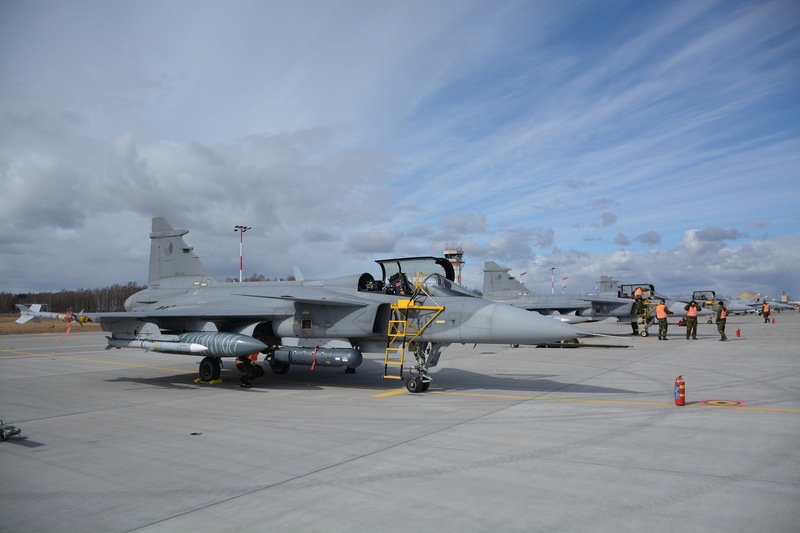
Speaking of the runway, in connection with the acquisition of the F-35 aircraft, there is often talk of the need to extend the runway. Will the runway need to be extended?
There will be some landscaping. But we have to say that we don't need a longer runway for the F-35. What we need is a runway with a higher load capacity than the current one. By the way, the runway modification project was being developed before the government even decided to start negotiating for the F-35, so it was finished long ago, and so was the design documentation. This project was developed according to STANAG, NATO's standard standards, and among other things it envisages that the F-35 aircraft will operate across the Alliance. In fact, the project itself meets the current requirements in the context of the planned F-35 acquisition.
So how long will the runway be after the reconstruction?
We currently have a 2,400 metre long runway, after the reconstruction it should be 2,450 metres long. So you can see that there is no major extension.
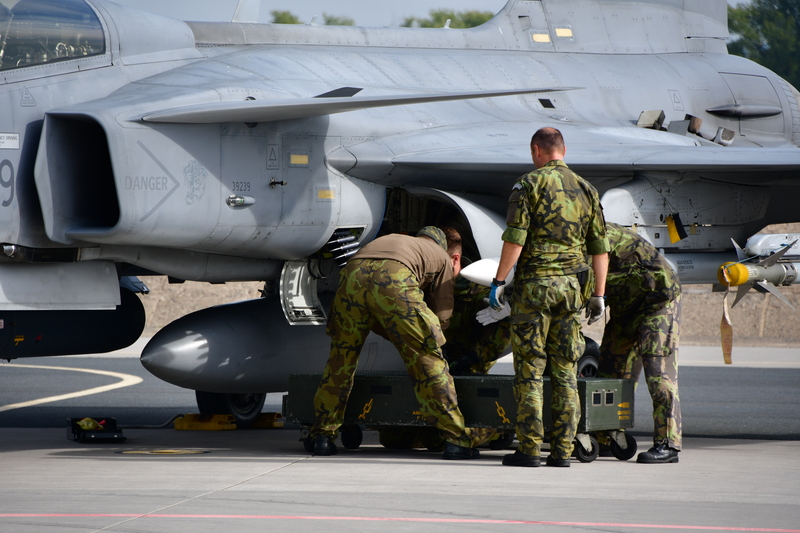
If we are talking about changing the infrastructure of the 21st base in Čáslav, do you have enough space for its possible expansion?
We are still operating in classified mode for the Gripens. However, if we are talking about the F-35, or any other aircraft that would require a top secret classification, it is necessary for all facilities or spaces to have a certain distance from the boundaries of the base itself. We cannot "stick" top secret buildings on the property boundary. They need to be deeper inside the base. We had a Site Assessment team here for the F-35 and their conclusion was that the Čáslav base is spatially capable of providing a solution for top secret facilities. With the arrival of the new supersonic aircraft, regardless of whether it's the F-35 or not, some of the older buildings will still have to be renovated or demolished at the expense of new buildings. Thus, major infrastructure interventions are foreseen, but that would have happened anyway. The fact is that if we were to acquire the F-35, the cost of building top secret facilities would then be higher than if it were a different aircraft.
Will there still be one runway in Čáslav, or are you considering a second runway?
There will be only one landing strip.
Do you think it's safe to have our entire tactical air force on one base? In addition, it is planned to have twice as many supersonic aircraft as the Air Force has at its disposal now. You're not considering a second base?
Of course, if we concentrate our forces in one point, it is always easier for an adversary to cancel this concentration. Let's look at Ukraine. When the Russians concentrate ammunition in large warehouses, what does that look like? If we are talking about operational deployment, F-35s or Gripens can be operated from bases other than Chaslav. Let's look at Bulgaria, where the Americans have reinforced the eastern wing of the Alliance with F-35s, they certainly haven't built another base there for permanent F-35 operations. In our country we still have Namesti or Pardubice, and in the event of a war conflict we can also consider the civilian infrastructure of Ruzyne or Moshnov. We are certainly not at the stage now where it could be seriously said that the ministry would consider building two tactical air force bases. At least I do not know about it. 24 aircraft is not such a large number that we should have the aircraft divided and operate them from two bases in peacetime conditions in the long term.
So there is really no consideration of operating the F-35s from any base other than Čáslav. We're not geographically somewhere on the border. We are not in the same position as the Finns, maybe the Swedes, the Baltic countries or the Poles. We are already a bit inland.
If there is one thing that is essential for the Central European region, it is integrated air defence, not so much in terms of the threat posed by the enemy's air force as in terms of its missile capabilities. Missile defence will be much more important than air differentiation in the years to come. If we talk about missile defence, we have to talk about some kind of European missile umbrella, which has three layers – the smallest, which is something like Israel's Iron Dome, then object defence in the sense of the Spyder, all the way up to large, long-range missiles that are capable of destroying an adversary's ballistic missiles as far away as possible.
Is it currently envisaged that in a possible crisis situation, the Czech Armed Forces could use certain sections of the Czech highways for their operations, as was the case in previous years?
Even if we talk about two squadrons, our air force is still so small in terms of numbers that it is more advantageous to use the current airport infrastructure than motorways. However, I can imagine that we could operate on the highways in some sort of emergency situation. However, it would cost a lot of effort (technology, communications), so I find it easier to use civilian airports eventually.
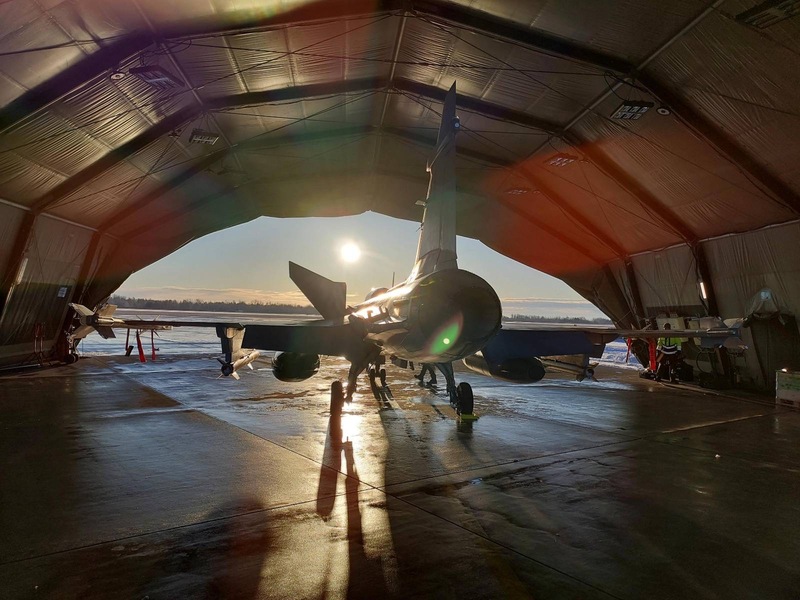
Is the Čáslav airport capable of receiving allied drones such as the MQ-1 Predator at this time?
Technically, yes. About the same as Náměšť. The biggest problem with drone operations in the European context is legislative.
How does the future expansion of the supersonic air force from 14 to 24 machines pose personnel requirements compared to the current situation? We are talking not only about pilots, but also about ground staff, technical support, etc. Will the Czech Armed Forces have enough personnel to operate the number of machines?
Currently, we operate three pilot squadrons at the base, which is 14 Gripens and 24 L-159s in numbers. If we acquire two supersonic squadrons, and it doesn't matter whether F-35s, Gripens or anything else, we will reduce the number of L-159s, so ultimately we will be operating with the same number of aircraft as before the increase in supersonic aircraft. The Army has long operated with an inadequate number of supersonic aircraft. Consider that back in 2002, the then Army leadership decided to buy 24 aircraft when it was planned to buy 24 Gripens. However, this plan did not pass the Parliament, so some temporary solution was sought, which was to last for 10 years. The lease of one squadron was supposed to last from 2005 to 2015 to prepare the whole process during this time. However, the reality is that by 2027 we will have been operating the JAS-39 Gripen for 22 years. Even if there is a rearmament then, that is, if we conclude that we will acquire F-35s, we will end up operating Gripens for a slow 30 years.
We don't have the personnel to operate 24 aircraft now, of course, but the first machine under the new aircraft purchase would still come to us in, say, 2029 or 2030, which is enough time to prepare the personnel well in advance, even from people who are not even in the military today. We can understand it basically as the youngest L-159 and Gripen pilots today would, purely in theory, form the future command core for the F-35.
Would the introduction of another squadron of supersonic aircraft change the need for armament due to the potential expansion of operational missions?
In the future, a fully standard NATO armament in the sense of Air to Air and Air to Ground is envisaged, with two squadrons covering both current missions and the defence of their own territory, which has not been emphasised much in the past. Now we still have one squadron exposed, which patrols 24/7 every day and flies somewhere abroad every 3 years. The sub-sonic squadron does its job of supporting ground troops, or bolstering the nation's air defenses. You can also observe that neither squadron can do anything to help each other in their tasks or share the tasks in question. That is why we need a two-year solution so that we can move into the classic cycle of preparation, deployment and, say, regeneration. We are now actually still in deployment. So the biennial is a solution so that we can perform our tasks in a meaningful way and not be constantly on the edge with all the capabilities, both human and technical.
Capabilities will obviously expand, regardless of whether a particular aircraft is itself a platform that doesn't need special containers and has everything on board. The second thing is that, thanks to its characteristics, communication and information technologies, the modern fighter aircraft is now also capable of performing the function of suppressing the air defences of the adversary, for which specialised aircraft are used today. With the new supersonic aircraft, however, we will only have this capability because of the characteristics of the aircraft.
What would the training and adaptation of our pilots look like in the transition to American machines? How much time would be required for certification, type retraining, etc.?
I don't have the exact answers, but the process is now standardized. It would, of course, be in cooperation with the U.S. Air Force, which is responsible for the initial training of personnel from all partner nations. Subsequently, the countries in question already train at home. I'm not worried about our people not being able to do it. We are not an inexperienced air force that would, for example, jump straight from MiGs into the fifth generation. We are an experienced air force, so I am not worried that retraining would be difficult. It will be standard like any other western country.
What is currently the minimum age for a pilot to operate the F-35?
You have to pass high school, graduate from college and have some training under your belt, so if you do the math, you could be 25, 26 years old. Then if you have the necessary qualifications, you can sit in the cockpit of the F-35.
If the F-35 is acquired, the first pilots should be trained directly in America, and then they should train other pilots here. Is this realistic?
This is subject to negotiations. We will certainly evaluate the experience of our European partners, but we will certainly want to carry out as much of the training as possible at home, not only in Pardubice, but also here at the base in Čáslav with L-159 aircraft. If a training centre for F-35s is established in Europe, we will certainly want to play a role in it. There will be a lot of F-35 users in Europe, and it is clear that the capacity of the United States is a given. Therefore, it is time for Europe to create its own F-35 training centre, which I think is far more realistic than basic pilot training.
What does participation in the protection of airspace over the territory and territorial waters of the Baltic republics bring to our pilots and what demands does it place on them?
As a NATO member, we have to participate in the protection of the airspace of the whole Alliance, in this case the Baltic States. This is actually burden sharing. The Baltics is an area where countries do not have their own supersonic air force. It is a strategic message that the Czech Republic is giving to NATO: "Look, here is a responsible partner that is participating in collective protection, even if it has only one supersonic squadron."
The other thing is, of course, the tactical level. With those 14 aircraft and those personnel, we have to plan every flight hour very precisely so that we can accomplish the mission. That's why we participate in a mission once every three years. We are not completely flexible because we have only one squadron, but we still have the admiration of our other partners who usually say that they could not do it at all.
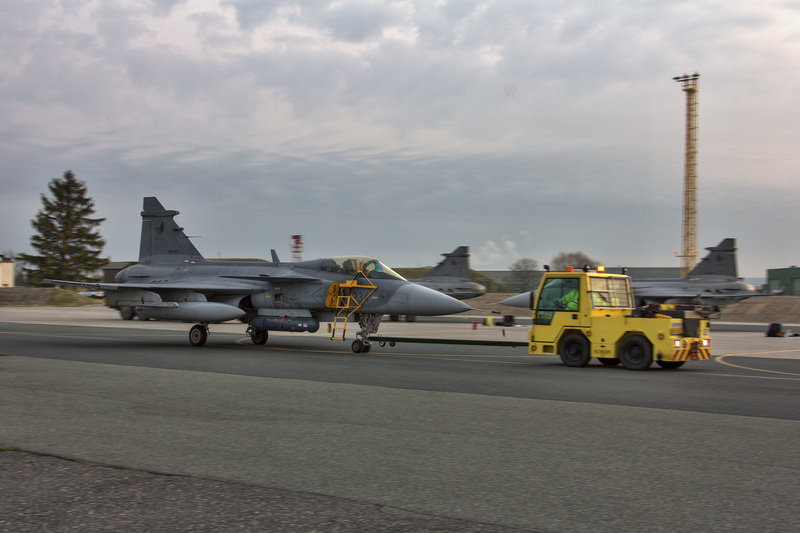 Picture: Departure to the Baltic States within the NATO Integrated Air and Missile Defence System (NATINAMDS) | 21. zTL
Picture: Departure to the Baltic States within the NATO Integrated Air and Missile Defence System (NATINAMDS) | 21. zTL
Participating in the Baltics gives our pilots valuable experience, after all, they are flying in an unfamiliar environment. Experience in a foreign environment is very important for pilots in case there is a deployment. When you fly on international exercises and missions, pilots gradually become nervous about operating in a foreign environment. This is important because nervousness is a limiting factor for a pilot, especially for the first to third day of a deployment. Through these experiences, especially when repeated afterwards, pilots reduce the performance limiting factor in the early stages of any conflict.
What all do you think a supersonic aircraft designed for the 21st century battlefield should be able to do given current world events?
In terms of the aircraft's characteristics, we should not just focus on its performance in terms of speed or range. That time has passed. The aircraft should have a standard supersonic speed and should be able to operate from our bases. What is important today is the information technology on board and, of course, legibility plays a big role. Given that a symmetric adversary would have a well-established air defense system, including surface-to-air missile assets, the stealth configuration of the aircraft should then help get through such a system. The systems overlap somehow, but there would have to be a lot of them side by side to avoid a hole. Stealth technology doesn't make a machine invisible, but it makes it harder to detect. The second important feature is internal communications connectivity, not only within the F-35 fleet, but also in space-to-ground communications. The aircraft itself is not self-sustaining, but the information network is very important for the aircraft to operate in the 21st century. In this respect then, given the high number of machines and their networking, the F-35 is the furthest along yet.
 Picture: Interview with General Míka | Michal Pivoňka / CZ DEFENCE
Picture: Interview with General Míka | Michal Pivoňka / CZ DEFENCE
The last question is directed to you. What machines have you flown and are you still flying now?
At the moment I am still in the JAS-39 Gripen, and have been since 2006. Before that, I flew the L-159. I was actually one of the first ones to switch to this aircraft and introduce it, which was in 2001. Before that, I went through the classic Zlin Z-142, L-29 Dolphin and L-39 Albatros trainer. However, I started flying gliders at the age of 14.












